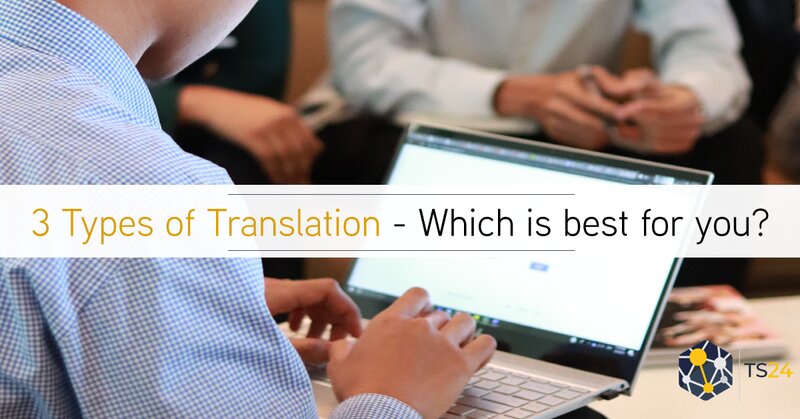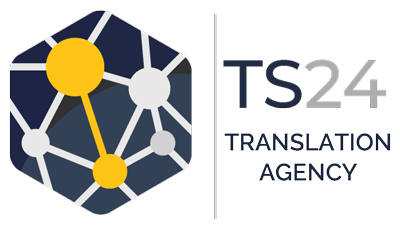Our Guide To The Different Types of Translation Services
Many people assume that translation is a straightforward process. You take the words of one language and translate them into another to make them more comprehensible.
In reality, translating entails anything that goes into communicating a written or spoken message from one language to another – from documents, websites, emails to telephone calls and facial expressions to body language. Globally, professional translation and interpretation services create the ability for two parties from different countries or cultures to accurately communicate and exchange ideas.
Translation also includes rewording to improve a text’s literary quality without altering its expression.
Therefore, translators must remain faithful to the original text’s meaning and respect its cultural context. This explains why more companies turn to a certified translation service to ensure the best possible translation. The primary types of translation remain the same across the board, nonetheless.
Three Main Types of Translation
Each translation type has a specific use case. For example, some businesses may prefer human translations over machine translations in particular settings. In other instances, they might go with post-edited machine translation.
Looking at popular translation types will reveal the right fit for your company.
Human Translation (HT)
Human Translation (HT) is the earliest known form of translation. It relies entirely on human intelligence to convert one language into another. Although relatively old and manual, it produces the highest quality of translation.
No machine can mimic the subtleties of language, context, meaning, and culture like a knowledgeable human translator.
Technology has evolved considerably, yet human translation continues to benefit organisations by considering the nuances of language meaning.
In fact, HT has worked its way up into the crowd systems. Here’s how they work. Typically, a translation firm would have freelance and full-time translators working individually or in groups to handle files manually.
Nonetheless, handling large projects can be a problem at this point. Therefore, technology-based crowd systems use hundreds and thousands of translators working together to manage a single project.
So, crowd systems minimise the costs that go into human translation and also resolve the scalability issue.
Machine Translation (MT)
Machine Translation (MT) works like Google Translate. It is a software-based procedure that translates the text from one language into another.
If you’ve used Google Translate, perhaps you know where the problem arises. Words with several meanings and multiple connotations compromise accuracy.
So, the quality and correctness of linguistics heavily rely on the translation tool and how well it has been tweaked.
The only perk is that machine translation automates the task and reduces time.
On the flip side, human translators take hours to translate a text. So, while machine translation is the cheapest translation technique, it compromises quality. After all, you receive what you paid for.
Post-Edited Machine Translation (PEMT)
PEMT fills the gap between the quality of HT and the speed of MT. Machine translation is quicker than humans; human translators analyse, edit, and upgrade machine-based translations.
Post-edited machine translations are more expensive than machine translations. However, they still cost less than human translations. That’s partly because post-editors do not have to be bilingually fluent. Instead, their proficiency and experience in the target language and location will do.
Quality translation involves more than mere words. Therefore, human translators, apart from being experienced linguists, must be familiar with the target language’s culture.
Further, knowledge and experience gained from living in a particular geographical region also make a difference between understandable words and impactful language.
Pros and Cons
Here are some advantages and disadvantages of the three translation types.
Human Translation
+ HT gives the most accurate type of translation because professional translators keenly observe the language style, culture, and context before translating.
+ A translator may provide free revisions depending on your instructions
– It’s more expensive than machine translation and post-edited machine translation
Machine Translation
+ The pre-set algorithms take seconds to convert the source language into the target language.
+ MT is more affordable than the former option because a few online tools provide subscriptions and enable you to translate several documents.
– The results are less accurate than PEMT and HT.
– Machine translation typically requires a hefty revision fee unless.
Post-Edited Machine Translation
+ PEMT gives quick readability results and maintains accuracy
+ It is a cost-effective option and minimises time consumption
– A few types of content may require more editing time because translation software does not work for all data types.
Importance of Translation for Organisations
Global business operations require consistent communication, and there is arguably a need for accurate translation. Fortunately, professional translation services lighten the burden of businesses by providing a translation that best aligns with an organisation’s needs.
Here’s why translation plays a crucial role in shaping businesses:
• Smooth global operations. A certified translation allows businesses to eliminate language barriers and communicate efficiently with employees, governments, stakeholders, and customers.
• Legal and foreign policies. Every company has a set of legal and foreign policy documents that must be comprehendible. Crucial documents detail needs to be accurate in translation to avoid unwanted repercussions.
• Eliminate misunderstandings. It isn’t uncommon to run into distorted messages when dealing with foreign customers. Your precise message may get lost in the translation, leading to misunderstandings that may hurt your brand image. However, professional translation services keep such unanticipated issues in check.
• Boost brand awareness. There isn’t a better way to maximise market reach than expanding your business globally. However, customers are likely to restrain from communicating with brands that do not translate text into their native language. To ensure your brand’s voice reaches a global audience, you’d need to translate it into their target language.
Conclusion
You can choose a translation type based on your needs. If you prefer speed over accuracy, you can go with machine translation. However, if you seek high levels of accuracy, human translation can serve your needs.
Finally, those wanting speed and accuracy should opt for PEMT. You need a certified translation to help you pick the right type to level up the translations for your organisation.
Because translating text goes beyond converting words from one language to another, there’s a need for skilled linguists.
Experienced professionals have in-depth knowledge of a language’s geographical region and culture; hence the results are highly accurate.




